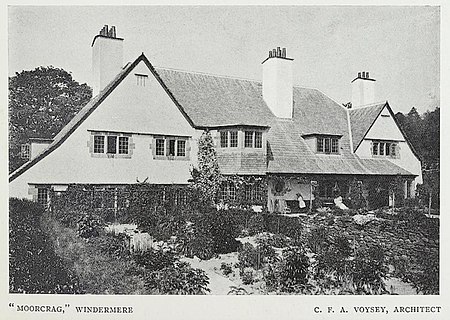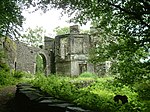Moor Crag
Cumbria building and structure stubsGrade I listed buildings in CumbriaGrade I listed houses

Moor Crag (sometimes Moorcrag) is a Grade I listed house near Bowness-on-Windermere in South Lakeland, Cumbria, England, overlooking Windermere. It lies in the north of the parish of Cartmel Fell. It was designed by C. F. A. Voysey in 1898-1899 as a holiday home for J. W.Buckley of Altrincham.Duncan Simpson in his 1979 work C.F.A. Voysey: an architect of individuality describes Moor Crag as "The single most important house designed by Voysey".
Excerpt from the Wikipedia article Moor Crag (License: CC BY-SA 3.0, Authors, Images).Moor Crag
A592, South Lakeland
Geographical coordinates (GPS) Address Nearby Places Show on map
Geographical coordinates (GPS)
| Latitude | Longitude |
|---|---|
| N 54.32427 ° | E -2.93683 ° |
Address
A592
LA23 3LP South Lakeland
England, United Kingdom
Open on Google Maps











